Your Call
Which of today’s five featured images do you like best? Why?
Which of image has the best low perspective/background combination?
My Call and the Depth of Field Explanation
In the last blog post, I could not pick a favorite caracara image; I loved the adult for its striking plumage and I loved the juvie head portrait as it exemplifies the BIRDS AS ART style — clean, tight, and graphic.
The background with the head portrait of the young bird was completely smooth and creamy in part because I was very close to the bird and in part because the background was relatively far from the subject. And yes, the depth of field increases dramatically as the distance to the subject increases.
Wanted to Buy
If you have a Canon 400mm f/5.6 L Lens sitting on a shelf unused for years and would like to sell it, please shoot me an e-mail.
What’s Up?
Tuesday and Wednesday mornings were fair at best. Both afternoons were a lot better with Wednesday afternoon being superb. If you knew where to be.
Today is Thursday 19 October and I will be heading to DeSoto for one last morning session before heading back to ILE. I head to Sebastian Inlet on Friday afternoon.
Wherever you are an whatever you are doing, I hope that you too have a great day.
Please remember to use the B&H and Amazon links that are found on most blog pages and to use the BIRDSASART discount code at checkout when purchasing your new gear from Bedfords to get 3% back on your credit card and enjoy free second-day air FedEx. Please, also, consider joining a BAA IPT. You will be amazed at how much you will learn!
You can find some great photo accessories (and necessities, like surf booties!) on Amazon by clicking on the Stuff tab on the orange/yellow menu bar above. On a related note, it would be extremely helpful if blog-folks who, like me, spend too much money on Amazon, would get in the habit of clicking on the Amazon logo link on the right side of each blog post when they shop online. As you might expect, doing so will not cost you a single penny, but would be appreciated tremendously by yours truly. And doing so works seamlessly with your Amazon Prime account.
If an item — a Delkin flash card, or a tripod head — for example, that is available from B&H and/or Bedfords, is also available in the BAA Online Store, it would be great, and greatly appreciated, if you would opt to purchase from us. We will match any price. Please remember also to use my B&H affiliate links or to earn 3% cash back at Bedfords by using the BIRDSASART discount code at checkout for your major gear purchases. Doing either often earns you free guides and/or discounts. And always earns my great appreciation.
Thinking of a 2024 Homer IPT?
If you have been dreaming of attending one or both of the 2024 Homer IPTs, please shoot me an e-mail; I will do my very best to get you there with a large discount.
|
|
|
Clockwise from the upper left back around to center: Osprey gaining altitude after missed strike; school of mullet under attack from below; Wood Stork with Southern Whiting; Osprey with Menhaden; Wood Stork with small lobster; Royal Tern with large baitfish; Osprey with Menhaden; juvenile Osprey directly overhead “t-shot”; Osprey taking flight with freshly caught Mullet. |
Sebastian Inlet In-the-Field Sessions
Join me for 3 hours of morning or afternoon In-the-Field Instruction at Sebastian Inlet for only $300.00/session (or $500 for a full day with two sessions). The main target will be fishing Ospreys hunting for a variety of migrating saltwater fish that visit the inlet each fall. Back-up subjects include fishing gulls, terns, and Brown Pelicans, Wood Stork, a variety of herons and egrets, shorebirds in the afternoon, sunrise cloud-scapes, and the occasional sea turtle or manatee.
October Dates: 21, 22, 24-29, 2023.
November Dates: 6-10, 2023.
Please get in touch via e-mail to book one or more sessions.
|
|
|
This image was created on 17 October 2023. Seated on damp sand behind my nearly flattened Robus RC-5558 Vantage Series 3 Carbon Fiber Tripod topped by a Levered-Clamp FlexShooter Pro, I used the Sony FE 600mm f/4 GM OSS lens with the Sony FE 1.4x Teleconverter, and The One, the Sony Alpha 1 Mirrorless Digital Camera.. ISO 1600: 1/1600 second at f/5.6 (wide open) in Manual mode. AWB at 9:09:38am on a then-cloudy morning. Tracking Zone/AF-C with Bird Face/Eye detection enabled performed perfectly. Be sure to click on the image to enjoy the larger, sharper, high-res version. Image #1: Non-breeding plumage Laughing Gull flapping after bath |
No Chance?
When I saw the gull dipping its breast in the water, my first thought was “It’s too close — there’s no way to avoid clipping the wings.” But I followed my own oft-given advice and tried anyway. I did chop off the wingtips in all but one of the ten frames. I was glad that I tried.
|
|
|
This image was also created on 17 October 2023. Again, seated on damp sand behind my now flattened Robus RC-5558 Vantage Series 3 Carbon Fiber Tripod topped by a Levered-Clamp FlexShooter Pro, I used the Sony FE 600mm f/4 GM OSS lens with the Sony FE 1.4x Teleconverter, and The One, the Sony Alpha 1 Mirrorless Digital Camera.. ISO 640: 1/3200 second at f/5.6 (wide open) in Manual mode. AWB at 9:13:02am on a then-sunny morning. Tracking: Zone/AF-C with Bird Face/Eye detection enabled performed perfectly. Be sure to click on the image to enjoy the larger, sharper, high-res version. Image #2: Common Tern non-breeding ruffling |
Zebras Rule!
Check out the capture times with the first two images. At 9:09:38am it was cloudy. I cheated a bit on the shutter speed at 1/1600 second and dialed the ISO up to 1600 when I saw a few zebras on the breast of the gull. When the sun broke through less than 4 minutes later, I raised the shutter speed and cut way back on the ISO. At 640, I saw a few faint Zebras on the tern’s very white breast and knew that I had another perfect exposure.
When I am working in changing light, I often feel sorry for folks not using Zebras or those using Sony who are not on the wagon.
Common Tern Non-breeding Plumage
Note the black carpal bar, the half rear cap that extends just to the eye, the red legs, and a hint of red in the bill. I believe that both the legs and the bills tend to become black on many or most birds.
|
|
|
This image was also created on 17 October 2023. Again, seated on damp sand behind my now-flattened Robus RC-5558 Vantage Series 3 Carbon Fiber Tripod topped by a Levered-Clamp FlexShooter Pro, I used the Sony FE 600mm f/4 GM OSS lens with the Sony FE 1.4x Teleconverter, and The One, the Sony Alpha 1 Mirrorless Digital Camera.. ISO 640: 1/4000 second at f/6.3 (stopped down 1/3-stop) in Manual mode. AWB at 9:27:10am on a then-sunny morning. Tracking: Expand Spot/AF-C with Bird Face/Eye detection enabled performed perfectly. Be sure to click on the image to enjoy the larger, sharper, high-res version. Image #3: Sandwich Tern non-breeding adult preening |
Old News
“When photographing preening birds, press the shutter button when the bird’s face and bill are square to the imaging sensor and when you have a clear view of the eye.”
Works every time!
Sandwich Tern Non-breeding Plumage
Note the rear cap that makes its way down the nape and the relatively long and slim black bill with the yellow tip.
|
|
|
This image was created on 18 October 2023. Seated on damp sand with the lens hood on the ground, I used the handheld Sony FE 400mm f/2.8 GM OSS lens with the Sony FE 2.0x Teleconverter, and The One, the Sony Alpha 1 Mirrorless Digital Camera). The exposure was determined via Zebra technology with Exposure Compensation on the thumb dial. ISO 500: 1/3200 sec. at f/5.6 (wide open). AWB at 8:41:32am in Manual mode. Tracking: Zone AF-C with Bird Face/Eye detection enabled performed perfectly. Be sure to click on the image to enjoy a larger, sharper, high-res version. Image #4: Royal Tern worn juvenile |
Lowest of the Low Perspectives!
Unless you dig a hole to put your lens in, you cannot get any lower than you can by placing the lens hood right on the ground. Hold the camera from below with your left hand while your right index finger is on the shutter button. Be sure to wear your reading glasses if you need them whenever you are working off the tilted rear monitor. With the level activated, you rotate the rig to square with your right hand.
Then you trust the AF system.
Royal Tern Worn Juvenal
Juveniles of this species always have an orange bill. The leg color is variable orange to blackish. Adults in breeding plumage usually have bills that range from orange to orange-red. One in a hundred birds has a red bill that approaches the intensity of the bills of breeding plumage Caspian Terns.
|
|
|
This image was created 5 October 2023 ankle-pod technique with the handheld Sony FE 200-600mm f/5.6-6.3 G OSS lens (at 600mm) and The One, the Sony Alpha 1 Mirrorless digital camera. ) The exposure was determined using Zebra technology with ISO on the Thumb Dial. ISO 800. 1/4000 second at f/6.3 (wide-open) in Manual Mode. AWB at 6:21:39pm on a sunny, 2500-flight image afternoon. RawDigger showed the exposure to be perfect. Tracking: Zone/AF-C with Bird Face/Eye Detection performed perfectly. Be sure to click on the image to enjoy a larger, sharper, high-res version. Image #5: Forster’s Tern, non-breeding adult fishing
|
Forster’s Tern, Non-breeding Adult
Both non-breeding adult and young Forster’s Terns feature black eye patches; note that the eye patch does not get anywhere near the crown or the rear of the head.
This bird was photographed on an early October visit.
|
|
|
All images from SEPT/OCT/NOV at Fort DeSoto. Click on the image to enjoy a larger, sharper high-resolution version. Clockwise from upper left to center: Piping Plover flapping after bath, juvenile Laughing Gull with feather, American Oystercatcher with sea urchins, Willet foraging in surf, American White Pelican juvenile swimming, skimmer/tern/shorebird blast-off blur, American White Pelican in flight, Black-bellied Plover stealing lugworm from Marbled Godwit, Roseate Spoonbill staring. |
The Fall 2023 Fort DeSoto Instructional Photo-Tours
Fall 2023 Fort DeSoto Instructional Photo-Tour #3
3 1/2 Days: Tuesday 31 October through the morning session on Friday 3 November 2023. $1899.00 includes three working lunches. Limit six photographers.
Fall 2023 Fort DeSoto Instructional Photo-Tour #4
3 1/2 Days: Tuesday 14 November through the morning session on Friday 17 November 2023. $1899.00 includes three working lunches. Limit six photographers/Openings: three.
Fall Bird Photography at Fort DeSoto
Fort DeSoto, located just south of St. Petersburg, FL, is a mecca for migrant shorebirds, terns, and gulls in fall. There they join hundreds of egrets, herons, and night-herons that winter on the T-shaped peninsula. With any luck at all, we should get to photograph one of Florida’s most desirable shorebird species: Marbled Godwit. Black-bellied Plover and Willet are easy, American Oystercatcher is pretty much guaranteed. Great Egret, Snowy Egret, Great Blue Heron, Tricolored Heron, and White Ibis are easy as well and we will almost surely come up with a tame Yellow-crowned Night-Heron or two. And there should be some quality Brown Pelican flight photography. In addition, Royal, Sandwich, Forster’s, and Caspian Terns will likely provide us with some good flight opportunities as well. Though not guaranteed, Roseate Spoonbill and Wood Stork might well be expected. And we will be on the lookout for a migrant passerine fallout in the event of a thunderstorm or two.
On this IPT, all will learn the basics and fine points of digital exposure. Nikon and Canon folks will learn to get the right exposure every time after making a single test exposure, and SONY folks will learn to use Zebras so that they can be sure of making excellent exposures before pressing the shutter button. Everyone will learn how to approach free and wild birds without disturbing them, to understand and predict bird behavior, to identify many species of shorebirds, to spot the good situations, to choose the best perspective, to see and understand the light, and to design pleasing images by mastering your camera’s AF system. Most importantly, you will surely learn to evaluate wind and sky conditions and understand how they affect bird photography. And you will learn how and why to work in Manual mode (even if you’re scared of it). The best news is that you will be able to take everything you learn home with you so that you will be a better photographer wherever and whenever you photograph.
|
Clockwise from upper left to center: Long-billed Curlew, juvenile Tricolored Heron, Marbled Godwits, Great Blue Heron, juvenile Pectoral Sandpiper, Wood Stork, smiling Sea Scallop, Ruddy Turnstone scavenging needlefish, Great Blue Heron sunset silhouette at my secret spot, and southbound migrant tern flock blur. |
The Details
There will be a Photoshop/image review session during or after lunch (included) each full day. That will be followed by Instructor Nap Time.
These IPTs will run with only a single registrant (though that is not guaranteed). The best airport is Tampa (TPA). Once you register, you will receive an e-mail with Gulfport AirBnB/VRBO information. If you register soon and would like to share an AirBnB with me, shoot me an e-mail. Other possibilities including taking a cab to and from the airport to our AirBnB and riding with me for $50/day. This saves you both gas and the cost of a rental car.
A $600 deposit is due when you sign up and is payable by credit card. Balances must be paid by check one month before the trip. Your deposit is non-refundable unless the IPT sells out with six folks, so please check your plans carefully before committing. You can register by calling Jim during weekday business hours at 863-692-0906 with a credit card in hand, or by sending a check as follows: make the check out to: BIRDS AS ART and send it via US mail here: BIRDS AS ART, PO BOX 7245, Indian Lake Estates, FL 33855. You will receive a confirmation e-mail with detailed instructions, clothing, and gear advice. Please shoot me an e-mail if you plan to register or if you have any questions on lodging.
Up Early, Stay Out Late!
Obviously, folks attending an IPT will be out in the field early and stay late to take advantage of the sweetest light and sunrise and sunset colors (when possible). The good news is that the days are relatively short in early fall. I really love it when I am leaving the beach on a sunny morning after a great session just as a carful or two of well-rested photographers are arriving. On cloudy days, we may — at the leader’s discretion, stay out in the morning for a long session and skip the afternoon session. To ensure early starts, breakfasts will be your responsibility. And so that we can get some sleep, dinners will sometimes be on your own as well.
Typos
With all blog posts, feel free to e-mail or to leave a comment regarding any typos or errors.

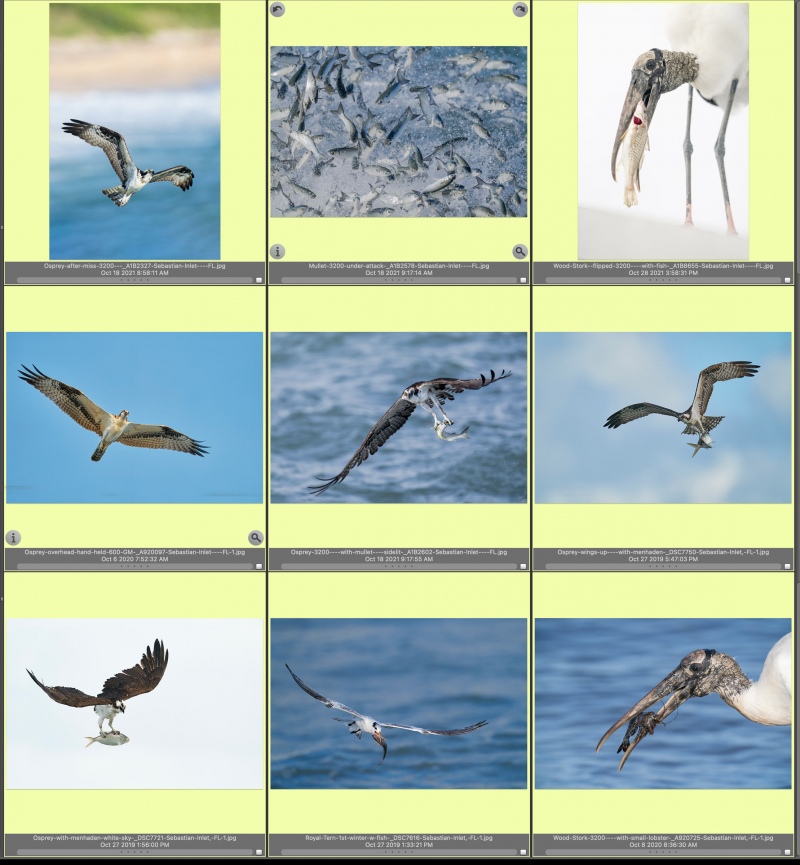
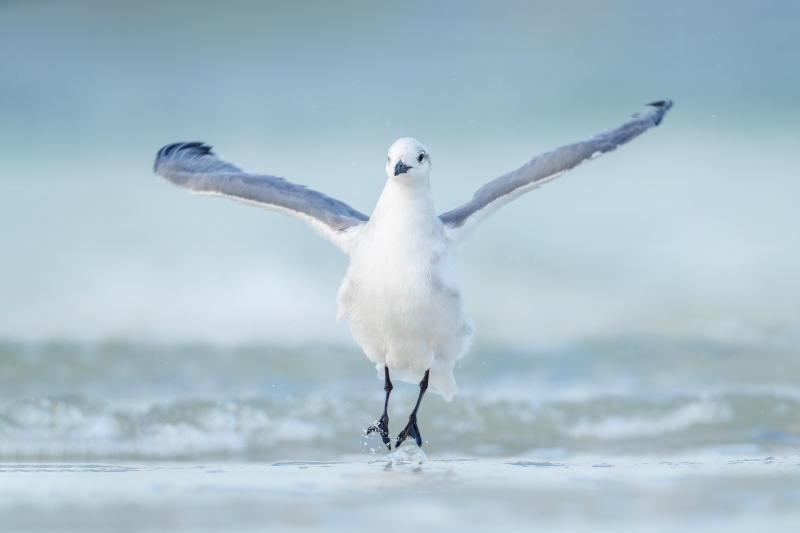
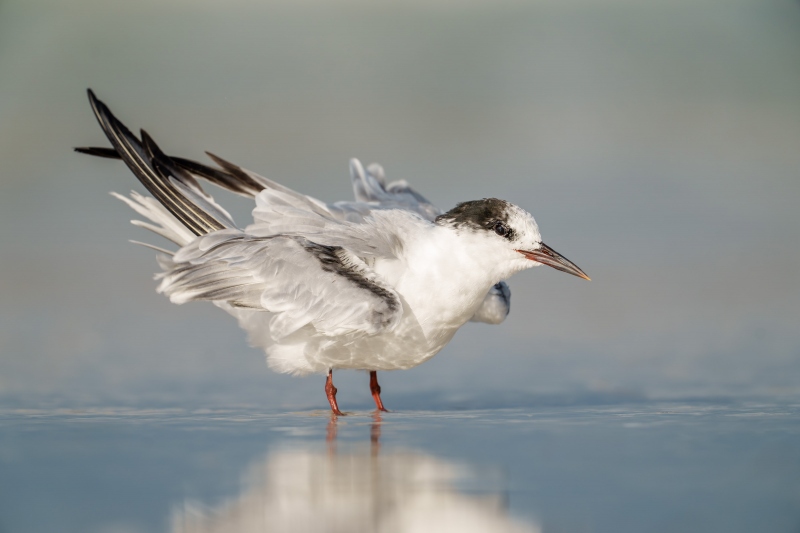
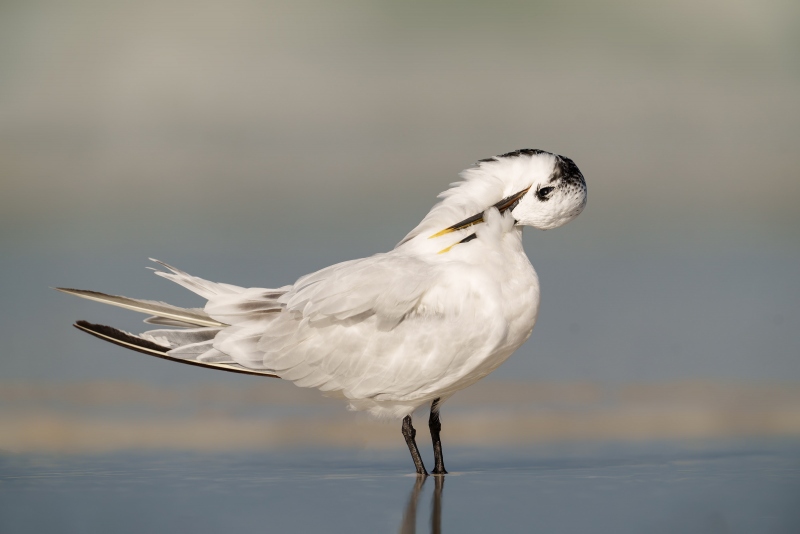
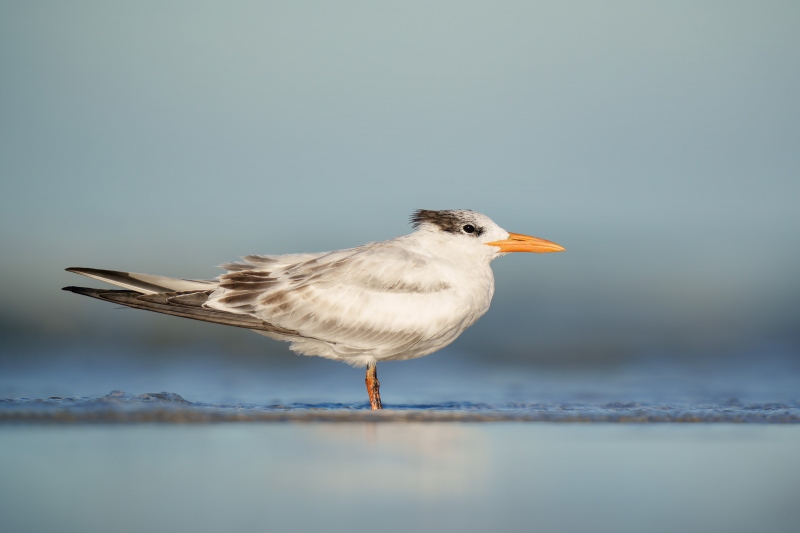
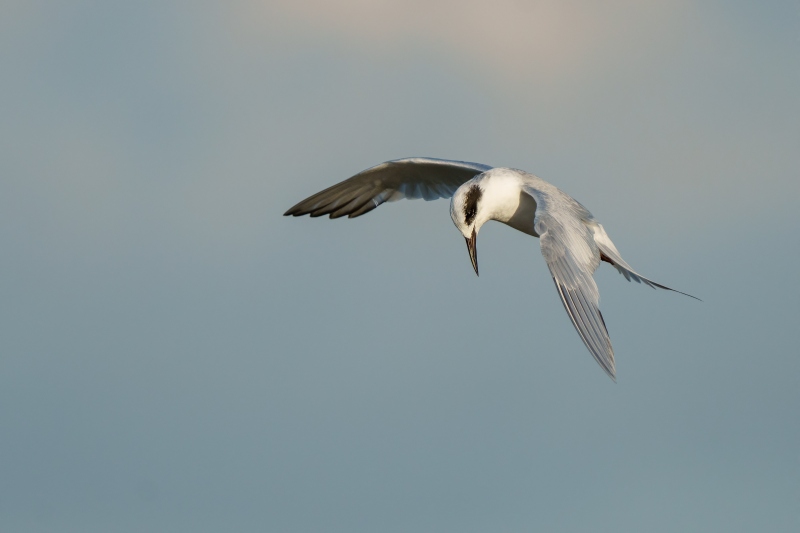
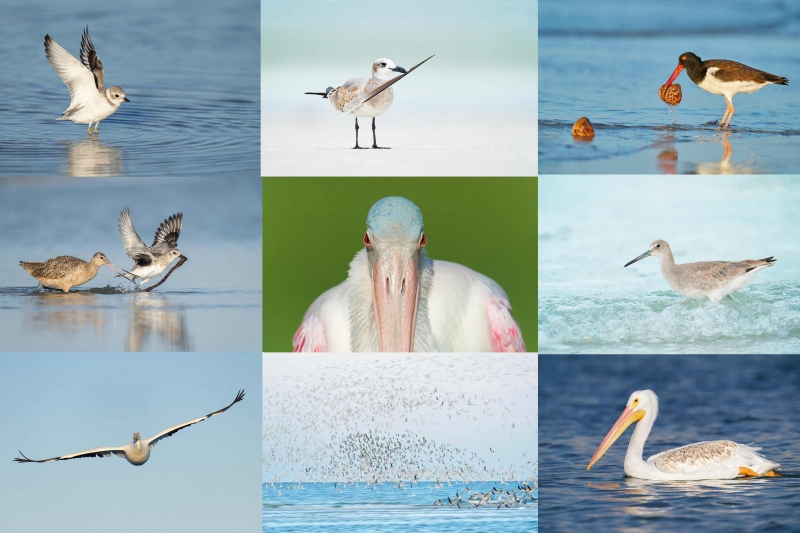














Artie,
They are all very good images. I like the bit of action in #1, however the colors in the foreground and background in #4 make it my favorite.
Thanks, Monte. I love the super-low look of #4.
with love, artie
All images #1 and #2 and #3 and #4 and #5 are interesting and well made! And the other images of 9 birds are interesting also.
Enjoy them all, but one stands out for me. Some will say it’s just a bird with a static pose, but the low perspective of 4 wins for me. You just can’t beat that transitions from foreground to subject to background.
Thanks, Pugs. See my reply to Monte, above.
a
#2 and 3 are my favorites. 2 because of the ruffling behavior and glow on the feathers and the reflection, head turn, and best background. 3 because of the emphasis on the beautiful bill and the preening behavior. And both because of the beautiful soft light and having the subjects and the viewer at the same level giving a strong connection with the birds.
Thanks,. Elinor. I love both of those, especially #3, the preening Sandwich Tern.
with love, a